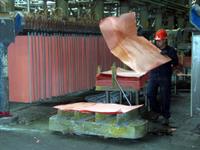



I have just been to two of the biggest man-made holes in the ground anywhere in the world: the Chuquicamata and Escondida copper mines in northern Chile. At Chuqi, I also got the chance to have a look around the copper smelter and refinery. This is how and where the wires in anything electrical start life. If you look closely at the photo of the open-pit mine you can see the vein of copper mineralisation. It is a thin darker band just inside where the shadow falls.